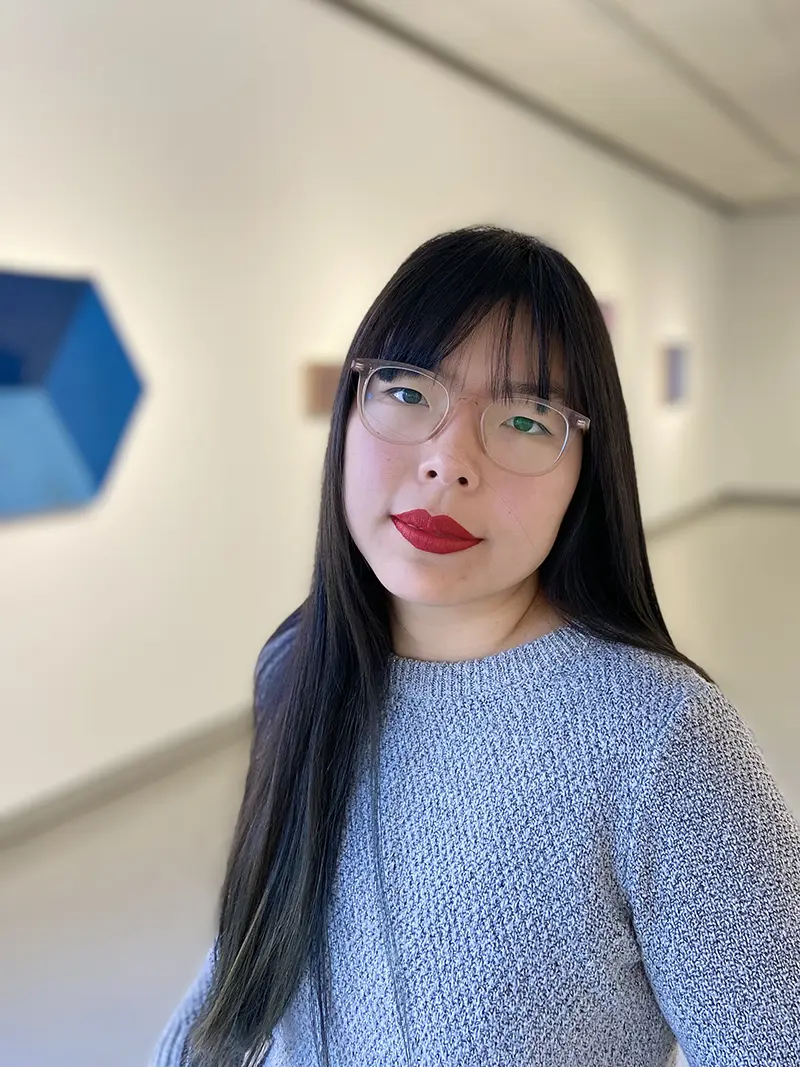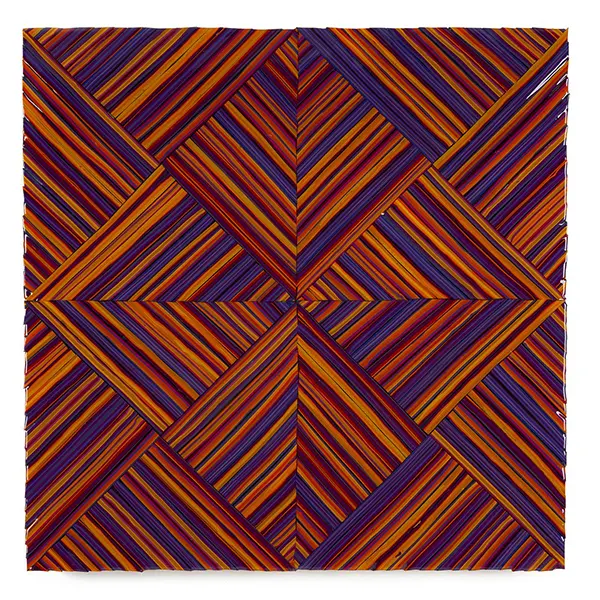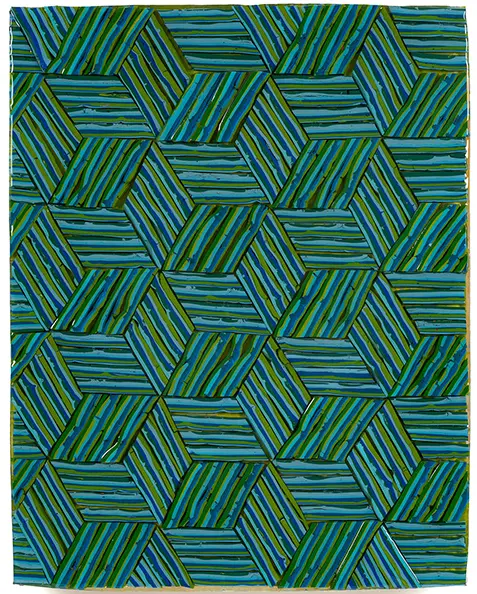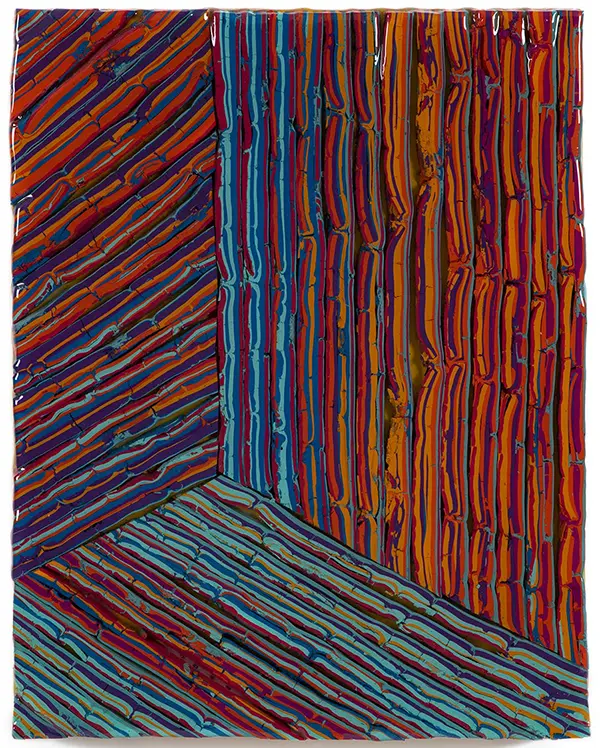The Pulteney Street SurveySummer '24

Wu is an artist, visiting assistant professor of fine arts at Trinity College, and Chair of Touchstone Foundation for the Arts in Washington, D.C. Her work has been exhibited in galleries and museums internationally. She holds a B.A. in studio art and architectural studies from HWS and an M.F.A. in studio art from American University. Learn more at jennywu.art.
Keep Trying New Things
Through her experiments with form and technique, artist Jenny Wu ’12 is searching for work that no one else could do.
BY ANDREW WICKENDEN ’09
Since leaving HWS, Jenny Wu ’12 has traded her paint brushes and canvas for an X-Acto knife and silicone dog food mats. With these nontraditional materials, she has refined her method of creating “painstakingly clustered bits and bands [that] have never appeared more unified, or more redolent of the wider world,” as the Washington Post noted in a review of Wu’s spring show at Morton Fine Art. “From the ways they shimmer and undulate…Wu’s painting-sculpture hybrids appear to be delicate. But an unexpected aspect of the artist’s creations is divulged by one of her characteristically whimsical titles: ‘Work Out So Hopefully I Can Be Strong Enough to Carry My Paintings.’.… [M]ade from thick multiple coats of latex paint that have been poured, dried and then cut into pieces…[t]he resulting artworks are as heavy in weight as they are light in effect.”

What are the origins of your sculptural paintings? The source of what I’m making right now goes back to when I was making landscape paintings, biking around Geneva and painting different scenes. Back in college, thick textured oil paint on canvas was attractive to me, and also the concept of time embedded under the surface, with each new layer of paint embodying linear time. My current sculptural paintings break open that time, transforming the liquid latex paint into malleable solids and revealing the contingent, sometimes chaotic nature of linear time.
In addition to the traditional painting and drawing courses I took at HWS, I took new media and architectural design studios, which opened up my perception of what art can be.

What’s different about this new process? Those years making landscape paintings taught me to see colors, how the blue sky is actually thousands of different blues. It was about discovering all those colors and trying to record or demonstrate that on the canvas. Now, I’m thinking: Okay, I want this piece to be mostly blue, but what blue? How do I arrange different blues? It’s more like building than painting in the traditional sense. I don’t have any brushes. The tool I use most frequently is the X-Acto knife. I remember using X-Acto knives to cut foam- core in architecture class; every 20 cuts the blade gets dull and you have to change it. I did not know that learning to cut things would play into my practice more than 10 years later.
You’ve been teaching undergraduate artists for a number of years now. What’s that like? It’s a rewarding and magical experience, especially to encourage students to find their own voices: how can you make a painting that only you—and literally nobody else in the world—can make? Teaching them, sometimes I feel I am teaching my younger self.

Looking back at your time at HWS, what lessons stand out? I remember very clearly Professor Nick Ruth once said painting is “muck on stuff.” When I first heard that, I was not ready to explore beyond oil on canvas yet. But those three words have been living in my mind rent free.
When I was making landscape paintings, I did not envision this future. I envisioned making stuff, but I didn’t know what. The work I’m making right now is one branch of lots and lots of trials and failures. It’s important to not fixate on one path — there could be many different paths. Don’t be afraid of being different or making the wrong things. I think it’s important to just keep trying new things.
